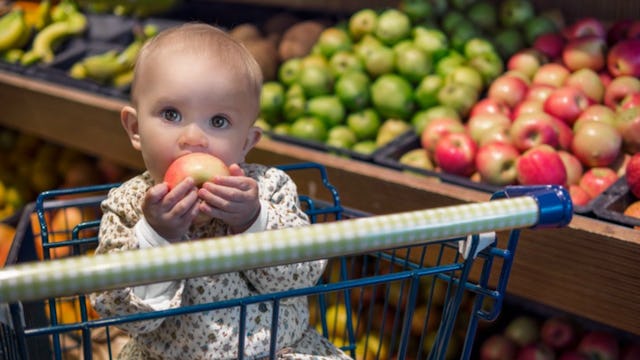New Program Makes Fresh Produce More Affordable For Food Stamp Recipients

One of the most difficult aspects of living on a low income is that eating healthfully is often out of reach. Healthy foods, especially fresh fruits and vegetables, are simply more expensive than pre-packaged and processed foods, and when you are on a shoestring budget, you usually have to buy the cheaper items just to stay afloat.
Research has found this to be the case as well. A 2013 study from Harvard and Brown universities, for example, found that eating healthfully costs families an additional $550 a year per person—which is a lot for a family who is struggling to get by.
And the glaring consequence of all this is that having an unhealthy diet can lead to health issues, chronic illness, and diseases, which no one should have to endure, regardless of socioeconomic status.
“For many low-income families, this additional cost represents a genuine barrier to healthier eating,” the study’s authors said. “Yet, this daily price difference is trivial in comparison with the lifetime personal and societal financial burdens of diet-related chronic diseases.”
None of this is okay. Low-income families should not have to sacrifice their health just to make ends meet.
But the good news is that this problem has not gone unnoticed, and there are some government-sponsored programs in place that are seeking to provide low-income families with more opportunities and incentives for healthy eating.
One such program was recently profiled by NPR. It’s called Más Fresco (“Fresher” in English), and it rewards SNAP (food stamp) recipients for buying produce. For every dollar spent on produce, participants receive a “one-to-one” dollar match of more spending money. Participants can earn up to $40 in extra cash, depending which tier of the program they are enrolled in. The extra cash can only be spent on more fresh produce.
As NPR reports, The University of California, San Diego is in charge of administering the program, with funding from a $3.4 million grant from the U.S. Department of Agriculture. The USDA has funded other programs like this one in states such as Illinois, Kentucky, Georgia, Pennsylvania, Minnesota, New Mexico, and Vermont.
“We know food insecurity and, unfortunately, chronic disease go hand in hand,” Joe Prickitt, a UCSD dietitian and senior director of Más Fresco tells NPR. “For SNAP participants, there’s a real cost barrier to buying fruits and vegetables. They say they’re just too expensive.”
Here’s how the Más Fresco program works.
Every time a participant spends a dollar on fresh fruits or vegetables, they receive a matched dollar amount that they can spend only on more produce. The limits are either $10, $20, or $40. The researchers who are studying the program randomly assigned reward amounts in an effort to figure out the optimal dollar level needed to make discernible changes in a person’s diet.
The program has enrolled 1,153 participants since it began in February 2017. NPR reports that participants receive an average of $329 a month in SNAP benefits and come from families of 5 or 6 people, on average. The vast majority (90%) are Latinx. But you don’t need to be Latinx to join.
As long as you are willing to shop at the participating stores (specifically Northgate Gonzalez Markets in Los Angeles, and in Orange and San Diego Counties) and meet certain criteria, you are good to go. In addition to the monetary incentive program, the program provides ongoing discounts on fruits and vegetables, as well as in-store education programs and healthy cooking classes for participants.
So far, as NPR reports, the program is getting positive feedback from its participants. And just last week, the program offered spots to 2,000 extra people, who will be able to participate and receive the incentive for the next year.
“The good thing is my family likes to try the new vegetables,” Rebeca Gonzalez, a participant in the program, tells NPR. “Now I can buy them because I have the extra money.”
That. Is. Awesome.
Low income families should not have to choose between having enough food to eat and eating healthy foods. We need programs like this everywhere, and pronto.